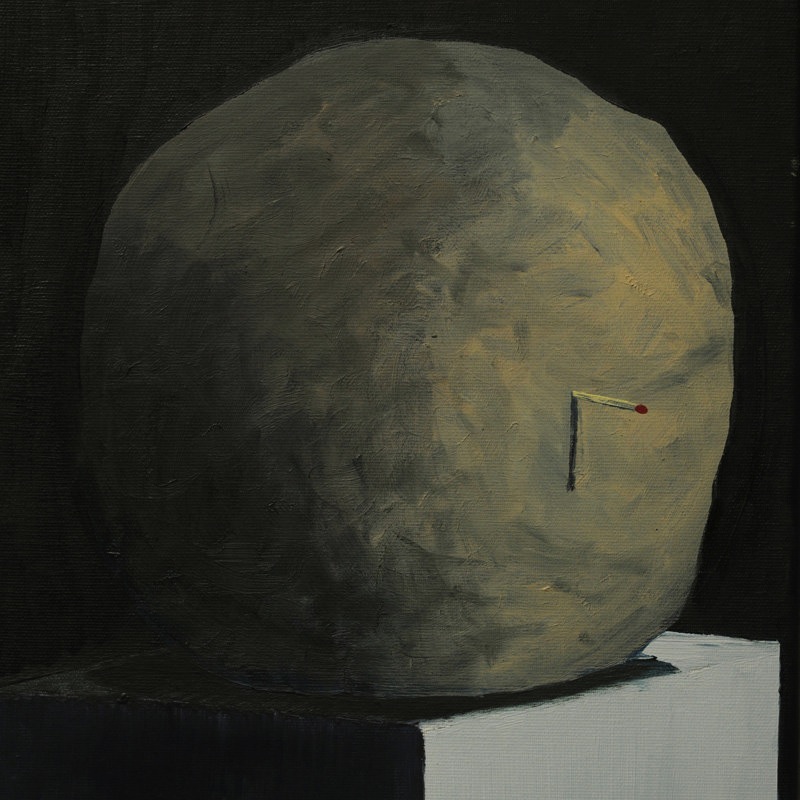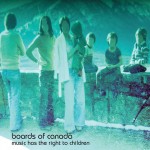The Caretaker : An Empty Bliss Beyond This World

Art makes you ask questions that you wouldn’t have asked otherwise, questions that make you think in a way that you wouldn’t have otherwise thought. You may have found yourself faced with some other work or situation that made you pose a similar query to yourself, but the phrasing would be different then, and sometimes the weight of problems is all in the phrasing and the particular way it throws certain facts and mysteries into relief. James Leyland Kirby’s work as The Caretaker is all about facts and mysteries. The fact that there are memories that are still “there” but lie somewhere deep in the subconscious, the mystery of what brings them to the surface.
An Empty Bliss Beyond This World carries on from where 2008’s Persistent Repetition of Phrases left off: mining old ballroom 78s for material embedded with nostalgia to be looped and sequenced in such a manner that the listener moves through states of warm, haze-caked, ether-bound nostalgia (for memories of a world never known) and into uncanny moments of discomfiture, disorientation, and uncanny familiarity. The project is inspired by research into Alzheimer’s that finds that people even in advanced stages of the disease are still able to recall music from many years before. A musical way of exploring the scientific way of describing the obvious (and especially saturated at present) relationship between music and memory, nostalgia and sentimentality: the prefrontal cortex is among the last regions of the brain to go. A long future of memories of songs that are memories of songs lies ahead…
The project is also inspired by the ballroom sequences from The Shining. Hauntings both natural and supernatural then, brought out through manipulation of the 78s, their melodies mostly still intact but often decaying, decomposing, being obscured with every revolution. I have never read The Shining but have seen the film quite a few times and the scenes in the ballroom always leave the greatest and most labyrinthine impressions on my imagination. What screen are we seeing this through? Only Jack Torrance, the caretaker, sees these things and it is suggested by the old photograph from the 20s at the end of the film that he was there before, actually in that time to which he hallucinates himself back to. I suppose these things could be linked up through imagining it all as an elaborate ghost story on which a clear supernatural narrative could be foisted. But I want to think about it all taking place in his head, as if he is slipping within his mind from one time and place to the same place at another time populated by wraith-like people as elusive and persistent as memories, people whose dancing is soundtracked by old ballroom records that call him and us back to a past we could never have experienced in the bodies we currently inhabit.
If Leyland Kirby was merely trying to indulge everyone’s nostalgia cravings by reusing some old 78s with origins obscured then this project would deserve some criticism (as I have seen it misguidedly criticized by some 20-year-old toddlers bobbling on hypnagogic cyberspace ice floes). By submerging them under extra layers of crackling and popping he is able quite simply to make listening more than listening, to make it a process of apprehending that which is not there, ghosted, from another time and place. There is an almost photographic quality of time, a registration of another time and place that every recording of a song is, a realization that we are led away from. The experience of listening is in the present. Every subsequent listen is again in the present. So we say. There is immediately something disjointing that sense of time through the oldness of the recordings and the even greater distance imposed by burying them further down beneath a barrier of subtly obscuring noise. Opener “All You’re Going to Want to Do Is Get Back There” is like that, a heady pleasure on its own, expressive of some sort of jubilation from which we are barred but that warms us nonetheless, as is “Camaraderie at Arm’s Length,” which stirs us once more back to a past life as a physical thing made of bodies moving through space before the record ejects us into a mental space emptied of all but the slightest traces of memory with “The Sublime is Disappointingly Elusive.”
In between a whole lot of things may happen to you if you are listening closely. Tracks end abruptly, move from a piece that felt whole to a fragment looped like a simulation of a memory that refuses to be reborn, that idles in a void while you wait with faltering hope for it to spool out in a stream of sensible, charged images. There are points at which this record is a mimetic approximation of watching your mind go, of hearing a melody and having a faint feeling of having heard it before but not being able to place it, even if it may have just played two tracks earlier. Another stretching and pitch-shifting of time to the toneless stasis of a present unhinged from a world of memory that would give its objects and people a context in which they are meaningful.
Questions: is this what Alzheimer’s feels like? Are those moments when a song goes on and on, when you get lost in its looping presence what eternity feels like, the eternity accessible by those for whom past and future have lost their hold on the present, which oozes out in black and white or over-saturated color from every perception and sensation? Isn’t that kind of like the experiences we often desire from art, the untimely experiences that disjoint us from the loops that we are locked and lock ourselves into? Music is a ghost itself, its every embodiment fading as it is registered, ungraspable, invisible. Yet it more directly moves people to emotional states than any other art. It does not need a narrative to represent an emotion but presents emotion in the endless spectrum that it is, in incarnations unnamable, indefinable if awkwardly describable, but always just beyond a place where words can take us. This is a record that I consider art because it contains within itself the shadows of such thoughts without being conceptually bound; that is, it moves us and moves us to thought with what it is and does, with ideas waiting to be made from its shadows and traces and no idea that quite holds it together.
Label: History Always Favours the Winners
Year: 2011
Similar Albums: Broadcast & the Focus Group – Investigate Witch Cults of the Radio Age
Broadcast & the Focus Group – Investigate Witch Cults of the Radio Age Boards of Canada – Music Has the Right To Children
Boards of Canada – Music Has the Right To Children Oneohtrix Point Never – Replica
Oneohtrix Point Never – Replica

